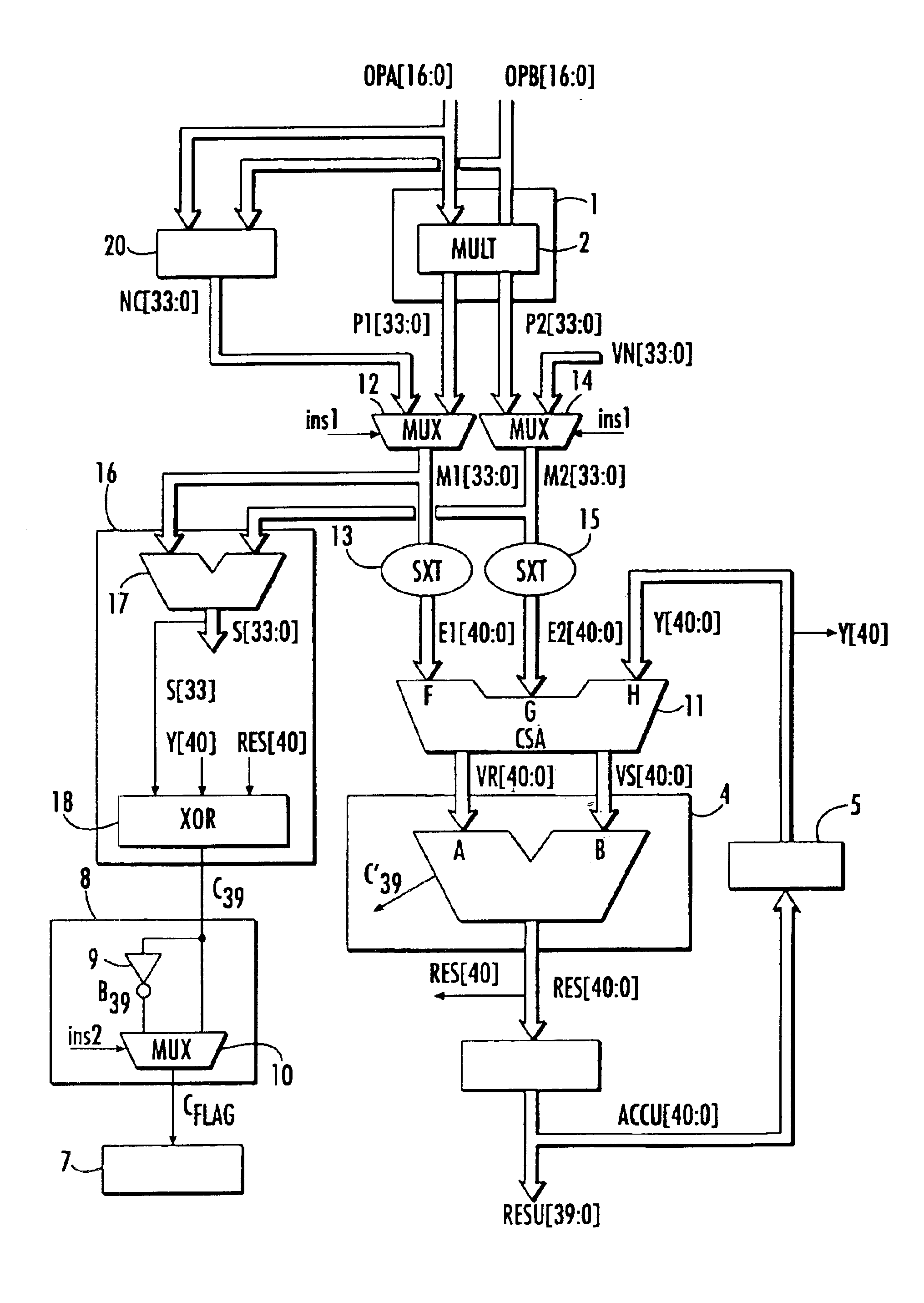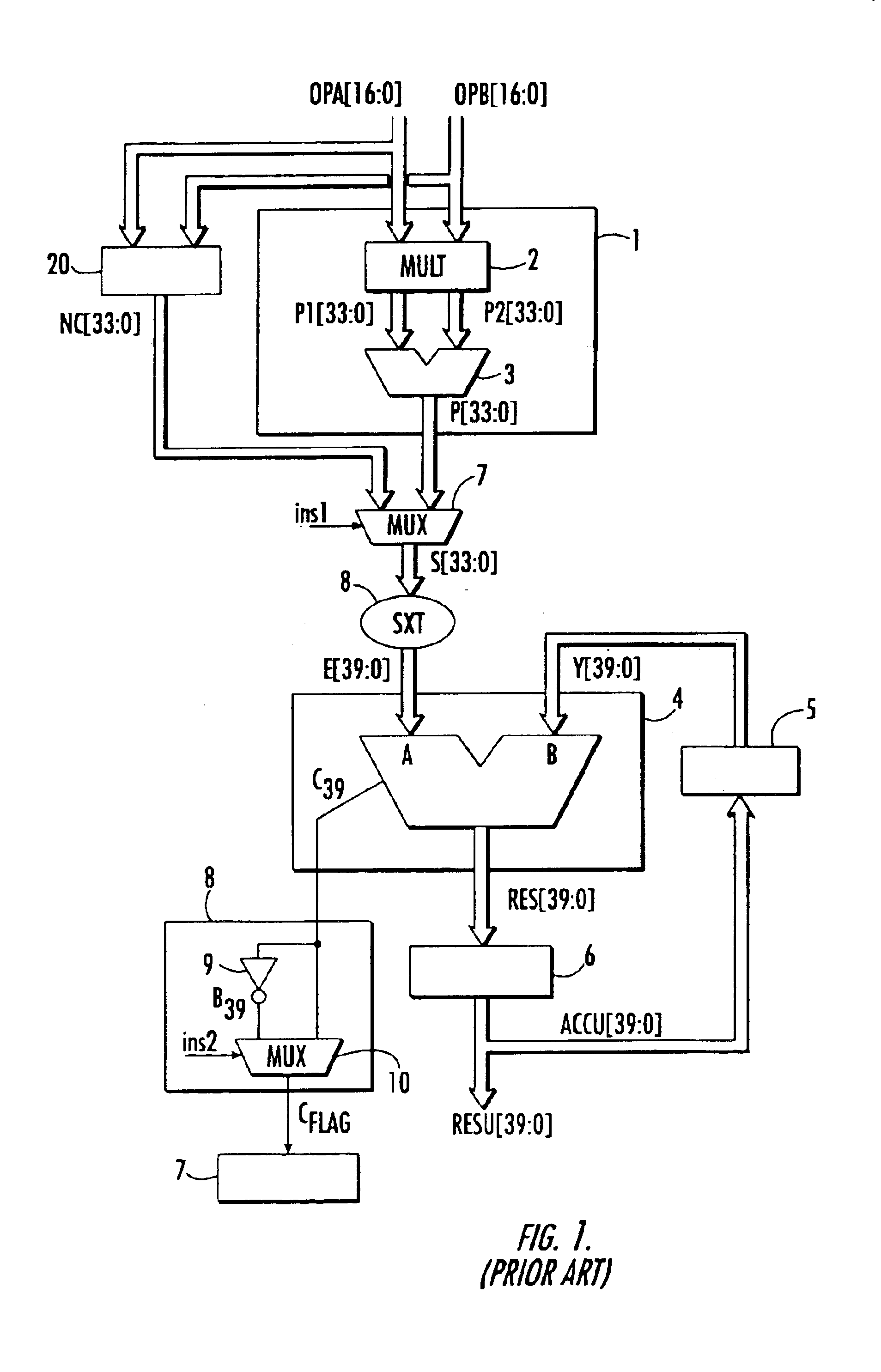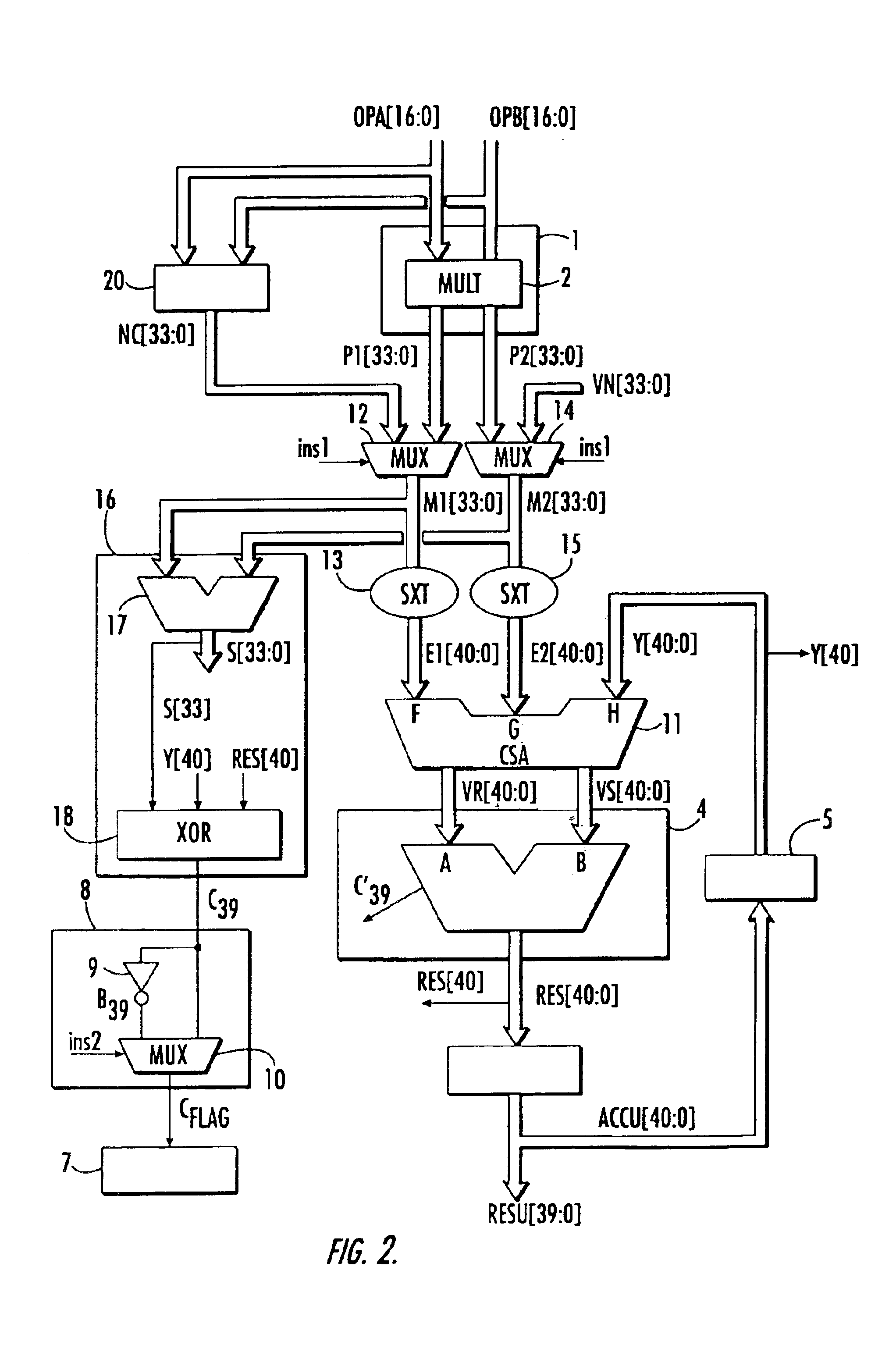Microarchitecture of an arithmetic unit
- Summary
- Abstract
- Description
- Claims
- Application Information
AI Technical Summary
Benefits of technology
Problems solved by technology
Method used
Image
Examples
Embodiment Construction
[0029]FIG. 1 shows a conventional arithmetic unit used especially to carry out multiplication-accumulation operations. In the example, it can also be used to carry out operations of accumulation of double precision numbers via the concatenation circuit. In this microarchitecture, the arithmetic unit has a multiplier 1 with two operands OPA, OPB applied to the inputs of the arithmetic unit. This multiplier has a circuit 2 for the computation of the partial products P1 and P2 of the input operands followed by an adder 3 that outputs the result P of this multiplication, the format of this result being double the format of the input operands.
[0030]In the example, this arithmetic unit also has a concatenation circuit 20 for the concatenation of the two input operands OPA and OPB. It outputs a concatenated number NC, whose format is twice the format of the input operands. Either of these results P or NC is applied to a first input A of an adder 4. The other input B of the adder receives t...
PUM
 Login to View More
Login to View More Abstract
Description
Claims
Application Information
 Login to View More
Login to View More - R&D
- Intellectual Property
- Life Sciences
- Materials
- Tech Scout
- Unparalleled Data Quality
- Higher Quality Content
- 60% Fewer Hallucinations
Browse by: Latest US Patents, China's latest patents, Technical Efficacy Thesaurus, Application Domain, Technology Topic, Popular Technical Reports.
© 2025 PatSnap. All rights reserved.Legal|Privacy policy|Modern Slavery Act Transparency Statement|Sitemap|About US| Contact US: help@patsnap.com



